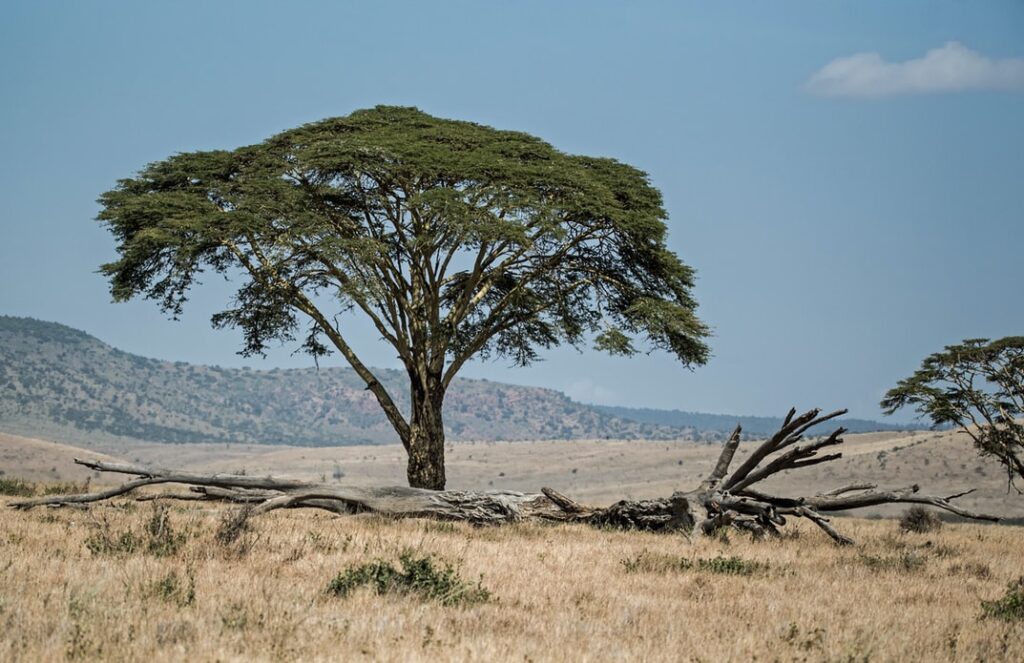Acacia Vera. Mimosa Nilotica. The Babul Tree of India. Or, more commonly in the west, the acacia. Many of the most well-known symbols of Freemasonry are human-made objects, such as the square and compasses or the cornerstone. However, Freemasons have also long turned to nature to help create and contextualize our philosophies. Acacia, an evergreen tree that can be found throughout Africa and the middle east, is a prime example. Given its rich history and significance within Judaism, this tree is an interesting symbol worthy of closer examination.

What is Acacia?
Acacia is a genus of 160 species of trees and shrubs in the pea family (Fabaceae) that are native to tropical and subtropical regions of the world. With its many variations, the acacia offers humankind a great many uses. Some varieties have long been harvested for their hardwood to construct weapons, homes, and furniture. Additionally, the hardened sap of the acacia tree – or acacia gum – has a wide range of uses, including an emulsifier in food, a binder for watercolor painting, and an additive to ceramic glazes, to name a few. Considering this wide range of applications, it’s no wonder that humans have such an ancient and close history with these plants.
Ancient Evergreen
When discussing acacia and its ties to Freemasonry, we refer to the vachellia tortilis. This species of acacia grows throughout northern and eastern Africa, as well as throughout the middle east. It is a fragrant and highly resilient plant abundant around Jerusalem to this day and is most famously known for its Biblical connection.
Known in Hebrew as “shittim,” God commanded Moses to use this tree to build the Ark of the Covenant, into which he placed the stone tablets carrying the Ten Commandments. Exodus 37 describes the Ark’s creation out of shittim, which was put into the Holy of Holies (Sanctum Sanctorum) in Solomon’s Temple after it was built.

The acacia’s significance throughout history is not just specific to the Bible. Both the ancient Hebrews and the Egyptians considered the tree to be a symbol of immortality because of its hardness, durability, and evergreen nature. Long ago, the Israelites would plant an acacia sprig at the head of graves to reflect this belief (and to mark the burial site).
Masonic Significance
Given that God chose the acacia as the tree for building the Ark of the Covenant, the Jewish people have long considered it more sacred than other trees. It is understandable then that early Freemasons emphasized the sanctity and symbolism of this plant by using it to teach a divine truth from the start.
Like the ancient Egyptians and Israelites, the sprig of acacia primarily symbolizes the immortality of the soul when it is presented to a Master Mason. The evergreen quality of the tree reflects the human spirit, the immortal part of us which can never die. This notion is presented towards the close of the monitorial lecture of the Third Degree. During which it is explained that we are strengthened by “the evergreen and ever-living emblem of immortality, the acacia.”
It is among the most beautiful symbols in our craft to associate the human spirit with the resiliency and versatility of this plant. It has been cherished by cultures for thousands of years, providing a sweet scent and vital resources for people in some of the most unforgiving environments on earth. Knowing this, the reverence for acacia is easy to understand. To summarize its significance within Freemasonry, an anonymous Brother elegantly wrote of acacia in a Short Bulletin Talk:
For at least two hundred years and probably much longer the sprig of acacia has held Freemasonry’s premier teaching. The grave is not the end. Bodies die and decay, but something “which bears the nearest affinity to that which pervades all nature and which never, never, dies,” rises from the grave to become one of that vast throng which has preceded us. Error can slay, as can evil and selfish greed, but not permanently. That which is true and fair and fine cannot be destroyed. Its body may be murdered, its disappearance may be affected, the rubbish of the Temple and a temporary grave may conceal it for a time, but where is interred that which is mortal, there grows an evergreen or ever living sprig of acacia – acacia none the less that it may be a spiritual sprig, a plant not of the earth, earthly.
###